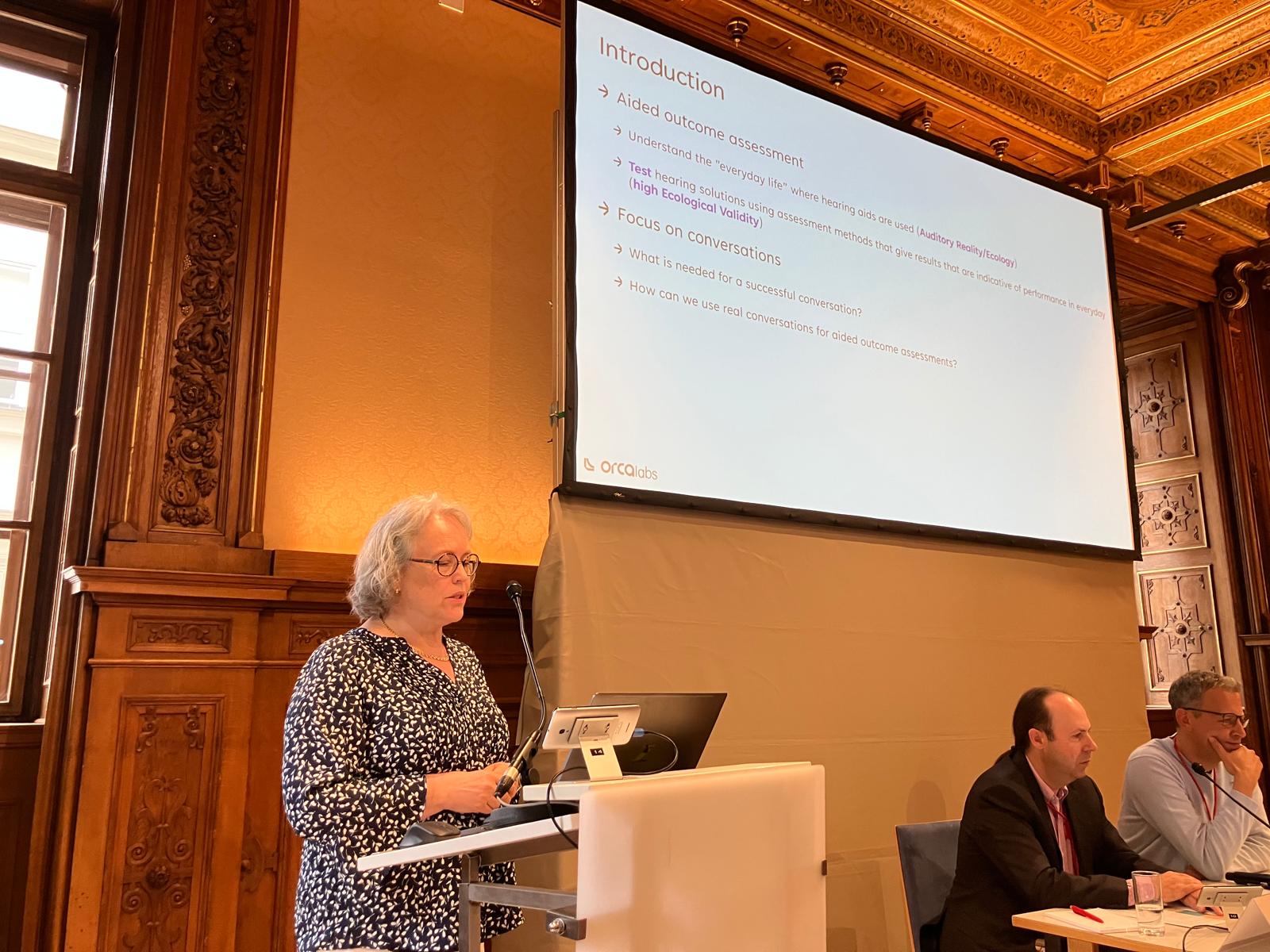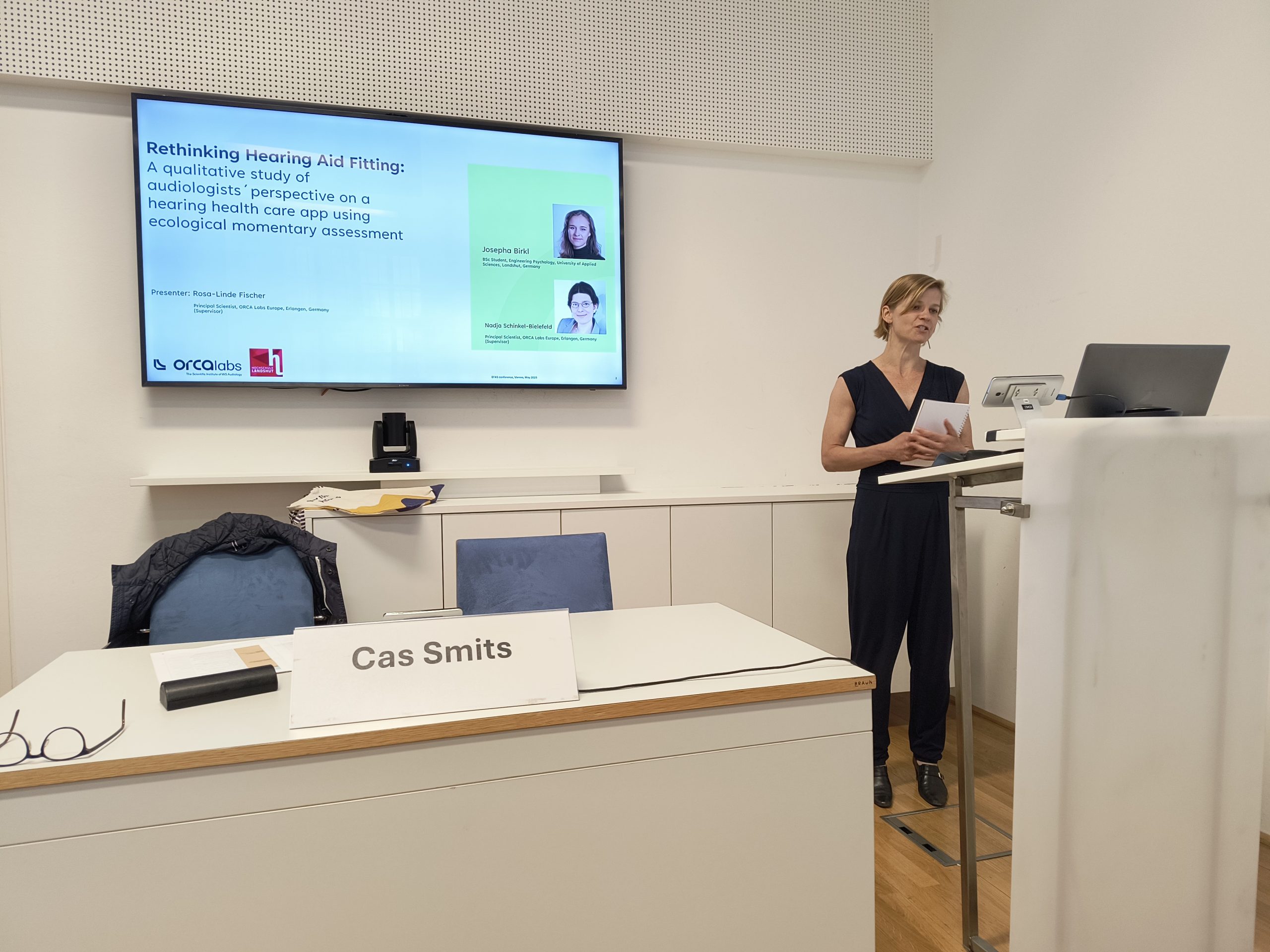ORCA Labs at EFAS 2025

In Focus June 2025
EFAS 2025
Just returned from EFAS 2025 in Vienna – what an inspiring event! Kudos to the organizers who had created an interesting program and to participants for contributing to inspiring discussions.
ORCA Labs contributions

ORCA Labs contributions
Conversation Success
In the presentation by Smeds and Rønne, the concept of Conversation Success (Nicoras et al. 2022) was introduced, and several ways to investigate success in group conversations was presented. There was a particular focus on a study where three interlocutors conversed in two levels of background noise (Petersen 2024). In each group, there was one interlocutor with hearing loss and one young and one older interlocutor with normal hearing. The interlocutor with hearing loss used two different hearing-aid settings in the situation with high-level background noise. It was found that the normal-hearing interlocutors raised their voices more in high-level noise than the interlocutors with hearing loss. In particular, when the interlocutors with hearing loss used hearing aids with directional microphones, they lowered their voice compared to when omnidirectional microphones were used. This suggests that the directionality setting provided the hearing-aid users with some relief from the background noise. Further, when requests for clarification (as a sign of miscommunication) were investigated, it was found that the burden of asking for repetition was more equally shared between the participants with normal and impaired hearing when directional microphones were used in the noisier situation. The presentation was concluded with an overview of the ways in which we have investigated group conversations.

ORCA Labs contributions
Rethinking Hearing Aid Fitting
The talk “Rethinking Hearing Aid Fitting” by Fischer, Birkl and Schinkel-Bielefeld explores how ecological momentary assessment (EMA) can enhance the hearing aid fitting process by collecting real-time data in users’ everyday environments. Despite the effectiveness of hearing aids, adoption remains low due to inefficient fitting procedures and retrospective, often biased, follow-ups.
EMA offers a solution by combining unbiased subjective user feedback with objective hearing aid data, enabling more personalized adjustments. The study involved interviews with seven experienced audiologists, who emphasized that the app should be designed primarily for clients who are technologically adept, cognitively fit, and face complex acoustic environments. However, the app should also accommodate communication partners, especially in cases where clients have cognitive or physical impairments.
Key design recommendations include short, modular questionnaires and end-of-day reflections. The app must be user-friendly, especially for older adults, and integrate smoothly into clinical workflows. The findings suggest strong potential for EMA-based apps in both traditional and emerging hearing care settings, such as teleaudiology or over-the-counter hearing care.